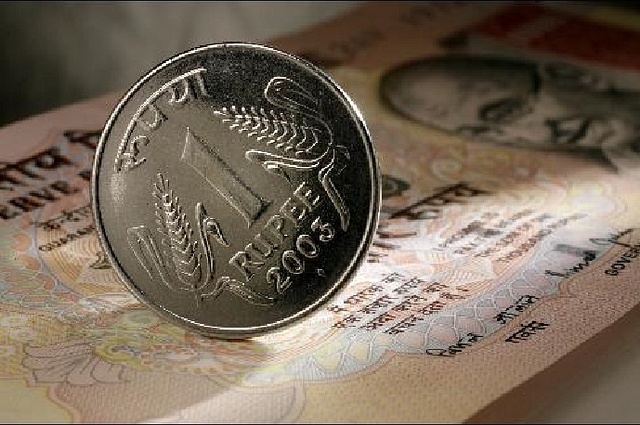
A $2 Tn Economy Can’t Make A Hash Of IIP, WPI, GDP Data; Here’s How To Fix It
In the last few years,
India’s number-crunching has become an embarrassment to country of its size.
India does not lack goods statisticians; we just lack the willingness to spend money to get good data.
Minister Gowda,should ask for a big investment in statistics for updating our
data series in the next
budget, or even now.
It is a pity that the man heading the Ministry of Statistics and Programme Implementation is someone Narendra Modi wasn’t impressed with. DV Sadananda Gowda is a lightweight politician from Karnataka, and he was shunted out twice in two years by Modi – from Railways to Law, and from Law to Statistics.
Unfortunately, statistics is not the
right place for an underperforming politician, for, in the last few years,
India’s number-crunching has become an embarrassment to country of its size. The
GDP data has been discounted not only by analysts but also one Reserve Bank
Governor (Raghuram Rajan) and Chief Economic Advisor Arvind Subramanian. The Wholesale Prices Index (WPI) is
ancient, and no one pays any attention to it. And the Index of Industrial
Production (IIP), an important indicator of industrial health, has become a
joke.
More than 10 years ago, Andy
Mukherjee (then with Bloomberg) wrote that “India’s industrial growth is one
part hair oil”, a derisory reference to the fact that the IIP in a particular
month was deeply influenced by changes in just one product: hair
oil. Last week, Aarati Krishnan, writing in BusinessLine, pointed out that just
one item – rubber insulated cables – depressed the IIP for July 2016 by four
percent.
Maybe, just maybe, this is the right
time for Gowda to prove his mettle: if he can fix India’s shoddy data problem,
he can still redeem himself. All it actually needs is pouring some money to fix
it, for India does not lack goods statisticians; we just lack the willingness
to spend money to get good data.
Here’s what is wrong with the data,
and now it can be set right.
First, while the Consumer Prices Index
is passable, the WPI is sadly out of date, and the data collection method also
seems dubious. Krishnan notes that getting even 60 percent of the data every
month is considered a great achievement. If that is the case, how can it be
valid as a pointer to current inflationary trends? Forty percent absent data is
not a small rounding error. In any case, with a base year of 2004-05, the WPI
is simply too old to be valid today. It is reading Vajpayee-era inflation.
Second, the IIP is similarly out of
date, and needs the same kinds of makeover, with changes in the items covered,
and getting the data faster and more correctly.
Third, updating indices cannot be a
serial affair – doing the CPI first, then the WPI and then the IIP. They all
have to be done together – and this is merely means throwing more money at the
problem. If you can update the IIP in 2017 or 2018, surely you could have done
it in 2012, when the CPI was given a makeover?
Fourth, indices have to develop continuity.
In a constantly changing economy, obviously no index can last forever, nor can
we avoid chopping and changing the constituent items in it. The answer cannot
be frequent changes in the base year, for then the time series advantage of a
long-running index is lost. How can we compare price trends in this decade with
the last decade, if the CPI starts only in 2012? How can we compare GDP trends
if the new gross value added methodology starts all of a sudden in 2011-12,
with no link to the previous GDP series?
There are two ways to solve the
problem: one is to continue publishing both the old series and the new series
for some years so that users and analysts can work out the relationship between
the old and the new data series.
In the case of price indices, another
way could be to change items and weights on the run so that the series
continues indefinitely; this is how stock indices like the Dow or Sensex get
their long-term character. Stocks may go in or out of the indices, but the
index series, despite being weighted differently at various points of time, is a
continuous one.
Even if this is not found feasible,
the need to update indices together (and not one after the other) and
continuing with the old and new series simultaneously for some time is
paramount.
Fifth, we simply need a producer
prices index. The idea has been around for a decade, but the Central Statistics
Office does not seem to have gotten around to developing one. Without such an
index, we tend to use the WPI (along with the CPI) to deflate the GDP numerator
and get the real growth rate, but this gives us a flawed number. We need to
deflate nominal GDP with a combination of consumer and producer prices, not consumer
and wholesale prices.
Mr Gowda, here’s your chance to do
things differently and get rid of the tag of underperformer. In the next
budget, or even now, ask for a big investment in statistics for updating our
data series. A $2 trillion economy surely can afford to spend a few hundred
crores to set its data right. The money would be well spent, and the resultant
granular data can even generate revenues from commercial users.
A nation with poor data will not know
if it is making progress or merely living in la-la-land. Even with reliable data, we are making policy by looking at the rearview mirror; without it, we are driving blind.